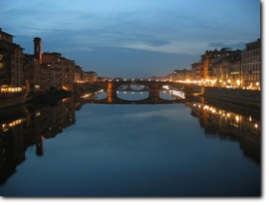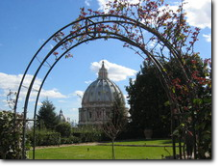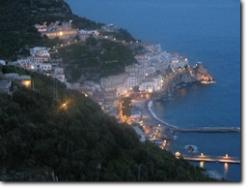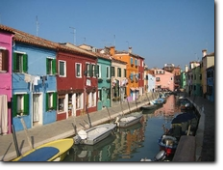Near Rome - County of Rome | Rome Suburbs | Outskirts of Rome | Province of Rome - Rome Travels | Home | Rome Guide | Rome Tours | Rome Travel | Religious Holidays | Italy Pilgrimages | Italy Shore Excursions




Main menu:
Near Rome - County of Rome | Rome Suburbs | Outskirts of Rome | Province of Rome
Near Rome the county of the Capital of Italy represents its complement due to multiple aspects. The Spirituality, Villas and Castles, Land and Water, Parks and Natural Reserves, Archaelogy and, of course, Food & Wine. "Valleys and chasms, nearness and distance, mountains covered with woods, gorges where furious torrents flows, extinct volcanoes..." That is how Goethe described the territory in his " Travels " in the Province of Rome.
See the Map of the Province of Rome.
Large Version, PDF File: 3,06 MB
The Sites of the Spirituality near Rome
Near Rome there are sites where the Spirituality grown up for centuries permeating the villages, burgs and little towns, where several Saints and Martyrs of the Christian Faith found their death or are resting in Peace and where the devotion of the people is still immaculated. The Sanctuaries are spread out throughout the entire Rome Suburb.
The Franciscan Retreats and Benedictine Abbeys show how the search for spirituality was always accompanied by a continuous effort to improve the conditions of labour and life according to the Benedictine rule "ora et labora" (pray and work).
Sanctuaries in the North Area of ROME:
1) Over the Tolfa Mountains, nearby Allumiere (75 km from Rome) we find the Hermitage of the Trinity.
2) Not far away stands the Sanctuary of the Madonna delle Grazie being the goal of numerous pilgrimages; in 1986, the image of the Madonna was crowned by Pope John Paul II.
3) The Sanctuary of the Madonna del Sorbo, in Campagnano of Roma (33 km from Rome),
4) Over the Mount Soratte, the Sanctuary of St. Silvestro is one of the first Benedictine coenobies.
5) The Abbey of Sant'Andrea in Flumine, 3 km. from Ponzano Romano (52 km from Rome), rises strategically between Mount Soratte and the Tiber River.
See also our section specifically dedicated to the Religious Itineraries.
Sanctuaries in In the South - SE Area of the Province of Rome.
1) & 2) The Monasteries of St. Benedict, the one of Santa Scolastica in Subiaco.
3) In Palombara Sabina (37 km from Rome) there is the Benedictine Abbey of St. John in Argentella
4) Just outside Rome there is the Sanctuary of Divine Love in Via Ardeatina.
5) & 6) Nearby Ariccia (27 km from Rome) stands out the Sanctuaries of St. Mary's in Galloro and The Sanctuary of the Madonna del Tufo.
7) The Hermitage of Camaldoli in Monteporzio Catone (25 km from Rome)
8) Last but not least, the stupendous Abbey of St. Nilo in Grottaferrata (21 km from Rome) following the Greek orthodox rituality but being of Roman Catholic worship. A must.
VILLAS and CASTLES in The COUNTY Of ROME:
The Villas & Castles present different aspects of extraordinary interest. Emperors and Princes, Popes and Cardinals have been driven often by the natual landscapes or simply fed up with the intrigues in the Courts of Rome, and therefore found their refuge in the province of Rome.
The Villas are witness of an artistic heritage of inestimable value, perfectly matching the evironment, the archaeology, architecture and pictorial decorations of centuries.
The Castles, still intact or knowledgeably restored, are not less suggestive and blend perfectly with the surrounding areas.
Both Villas and Castles are the result of centuries of Papal domination or families connected with the papacy and showing their immense properties to the local people.
ARCHAEOLOGY In The SUBURB of ROME:
The Archaeology sites in the county of Rome: it is an impossible task in one hand and absolutely natural on the other to disclose and promote the knowledge of inestimably valuable archaeological heritage, offered by the Outskirts of Rome. If one thinks that in the time of Julius Caesar (50 B.C.) in Italy ther was a total of 80.000 km of Roads (nearly 50.000 miles), how many of them apssed through the county of Rome? Most of them. And consequently, how many towns, fortresses, villages and cities can be found on the route of the Province of Rome ? It is a too big deal.
The ruins of the Roman Age, the Etruscan settlements, the monuments spread out in today's towns had their splendid times and the mystery of life gone that nowadays still fascinates visitors. If it is true, as the famous saying goes, "All Roads Lead to Rome", it is also true that all roads cross the Rome Suburbs !
LAND And WATER In The OUTSKIRTS Of ROME:
Land and Water: Visitors are impressed by the harmonious fusion of earth and water in the County of Rome. They can choose the destination(s) that best satisfy their interests and expectations. Lakes where the Ancient Roman Civilization left its magnificient heritage: Lakes of Albano, Nemi, Bracciano, Martignano.
On the other hand, the shoreline of the County of Rome has over 100 kilometres (60 miles) of coastline from Civitavecchia to Nettuno. A unique heritage of monuments and bimillenary beauties of nature mixed with the newness of modern tourist facilities (Civitavecchia Pier and Fiumicino Airport). Our receommended itinerary starts in the North-West section of the province in Civitavecchia, the Roman CentumCellae, whose old harbour was founded by Emperor Trajan in the 2nd century A.D. and where nearby are located the Roman Baths (Thermal Spa) of Terme Taurine.
Following the coast, lies Santa Severa, the ancient Greek-Etruscan port of Pyrgi, as testified by some splendid ruins, the imposing Odescalchi Castle and its wooden suspension bridge, the cylindrical Norman tower (XI Cent.) and triple walls.
Then we enter Fiumicino, nearby lies Ostia, the beach of the Romans, a true city within a city. Continuing South we find Anzio, an important port, equipped with services for the Pontine Islands, which was where the Roman emperors spent their holidays as well as where Caligula and Nero were born and the last had his own Villa (Nero's Villa in Anzio). Today, to reming the American Soldiers died in Anzio in 1944 to liberate Rome, there is the Memorial Museum of the Beachhead. Next to Anzio, the travel itinerary along the provincial sea-coast ends up in Nettuno: the characteristic medieval village and Fort Sangallo are of great interest. Not to be forgotten is the Astura Tower, which is connected to the mainland by a bridge and where can be found the ruins of a Roman villa. According to the Omere's legend, it's exactly where landed Eneas, escaping from Troy. And the history of Rome begins.
PARKS And NATURAL RESERVES Nearby ROME:
The Parks and the Natural Reserves in the County of Rome cover a considerable area and testify how many areas are protected in the Province of Rome.
Regional Parks: Old Appian Way (Appia Antica); Roman Castles; Lakes of Bracciano e Martignano; Inviolata; Monti Lucretili; Monti Simbruini; Valle del Treja; Veio;
National Nature Reserves: Litorale Romano (Roman CoastLine); Tenuta di Castelporziano
Regional Nature Reserves: Rome
Protected areas of the Province of Rome: Macchia di Gattaceca e Macchia del Barco; Monte Catillo; Monte Soratte; Nomentum; Villa Borghese; Macchiatonda; Monterano; Tevere Farfa; Tor Caldara; Palude di Torre Flavia; Valle delle Cannuccete;
Marine Protected Areas: Caldara di Manziana; Lake of Nazzano.
1. THE ROMAN CASTLES - The Origin of Rome -
Recommended Itineraries with their highlights
Castel Gandolfo - the Summer Papal Residence
Albano and its Lake - The Roman Museum, the Old Roman Fort & Water Cistern
Ariccia - Chigi Palace & Museum, Bernini' Church of the Assumption
Nemi and its Lake - Museum of the Roman Boats, The Nimpheum of Diana
Genzano - The Fiest of Flowers & Bread
Lanuvio - Old Roman Temple of Juno - Villa Sfoza-Cesarini - Colonna Palace - Old City Walls
Velletri - Pre-Roman Period - Roman - See the pics of its Archaeologic Museum
Frascati - Museum - Villa Aldobrandini - Villa Falconieri
Grottaferrata - Abbey of St. Nilo
Marino - Museum - Church of S.te Lucia
The Archaelogical excavations of Rome under the Palace of the Province of Rome (one block away from Venice Square, the heart of Rome) can be finally be visited. Now it is possible to visit the two Roman Domus and small Baths. The entrance is Free but the reservation, thorugh us, is mandatory. The Roman Houses and the Small Baths are open from 09:30 am to 05:30 pm and the visits lasts appx. 30 minutes.
Visitors who are interested may also admire the Virtual Rome, the multimedia project carried out by the Province of Rome that reconstructs the missing parts and the Roman ambience of the area, inclusive of the Trajan Forum and the Trajan's Markets.
2. CERVETERI: The Etruscan Trip in the County of Rome.
Cerveteri was one of Etruria's most important and wealtiest cities due to its location nearby the mining riches in the Tolfa mountains. The Etruscan Ceisra and the Roman Caere is the quintessence of the Etruscan Necropolis, whose most famous example is to be found in the Tumulus Tombs. In here in the XIXthe cent. have been discovered some of the best Etruscan Art: rings, bronzes, rough metals, jewellery, object carved in ivory and bones, "bucchero" wares. Most of these masterpices are now hosted in Museums of Rome (Etruscan Museum of Villa Giulia; Etruscan Museum of the Vatican Museums; Musei Capitolini).
CERVETERI: the reasons of being one UNESCO WORLD HERITAGE SITE
The Capital of the Etruscan Necropolis
The most famous attraction of Cerveteri is the Necropoli della Banditaccia (amongs other in the area), which has been declared by UNESCO a World Heritage Site. It covers an area of 400 ha (988 acres) and only 10 ha can be visited, covering a total of 1.000 tombs, often housed in characteristic mounds. Cerveteri is the largest ancient necropolis in the Mediterranean area.
To see: The Necropolis of Banditaccia and the National Museum in Cerveteri.
Highly recommended a side trips: a short visit to the enchanting Medieval Burg of Ceri.
3. PALESTRINA
The Sanctuary of Fortuna Primigenia (IInd Cent. B.C.). - The city was a major cultic centre for the worship of the goddess Fortuna Primigenia. Here, the sanctuary and temple oracle were surrounded by an immense complex of buildings rising up the hillside like a pyramid of terraces, visible even from the sea-coast. The cult was flourishing by 120 B.C and its flames and torches could be seen until Anzio Beach, over 20 miles (30 KM) distant. Seven terraces, hundreds of columns, fountains, enchanting views, landscapes, and the most fascinating and accurate mosaic in the whole Roman World, The Nile landscape.
In the XVth Century the Colonna Family built their family palace over the Temple, passed by to the Barberini Family, where today there is the access of the Museum.
Spectacular is its Palestrina downtown with the Duomo of St. Agapito built in the remains of what was the Forum of Palestrina. See the Foudation of Pierluigi da Palestrina
4. MEDIEVAL BURGS and ROUTES through the Roman Roads
4.1. Via Flaminia & Via Tiberina (Tiber Valley): Riano, Castelnuovo di Porto, Capena, Morlupo, Rignano Flaminio, Sant'Oreste, Fiano Romano
4.2. Via Salaria. Monterotondo, Mentana, Palombara Sabina and Poggio Mirteto.
4.3. Via Tiburtina & The Valley of the Aniene River : Arsoli, Antìcoli Corrado, Cineto Romano, Mandela, Vicovaro, Castel Madama, Tivoli.
4.4. Via Prenestina : Palestrina, Cave, Genazzano, Paliano.
4.5. Via Casilina : still now leads to Capua (Caserta), coincident with two Roman Roads ( Via Labicana and Via Latina), Zagarolo, Valmontone, Colleferro, Segni, Fiuggi, Anagni, Ferentino.
4.6. Via Braccianese, from Rome to Bracciano and its Lake, Oriolo Romano, Manziana, Trevignano Romano, Anguillara Sabazia.
4.7 Via Cassia : Sacrofano, Campagnano, Formello, Isola Farnese
4.8. Via Aurelia : Castel di Guido, Aranova, Ceri, Cerveteri, Santa Severa, Tolfa.
Tour Cost - Private Tour Guide with private transportation - 8 hours tour -
1-2 people : EUR 1,300.00
3-7 people : EUR 1,500.00
8-17 people * : EUR 145.00 per person
18-50 people * : EUR 100.00 per person
* : Included the these costs is also the minibus/bus permit.
NOTE: 22 % VAT tax NOT INCLUDED IN THE ABOVE COSTS
